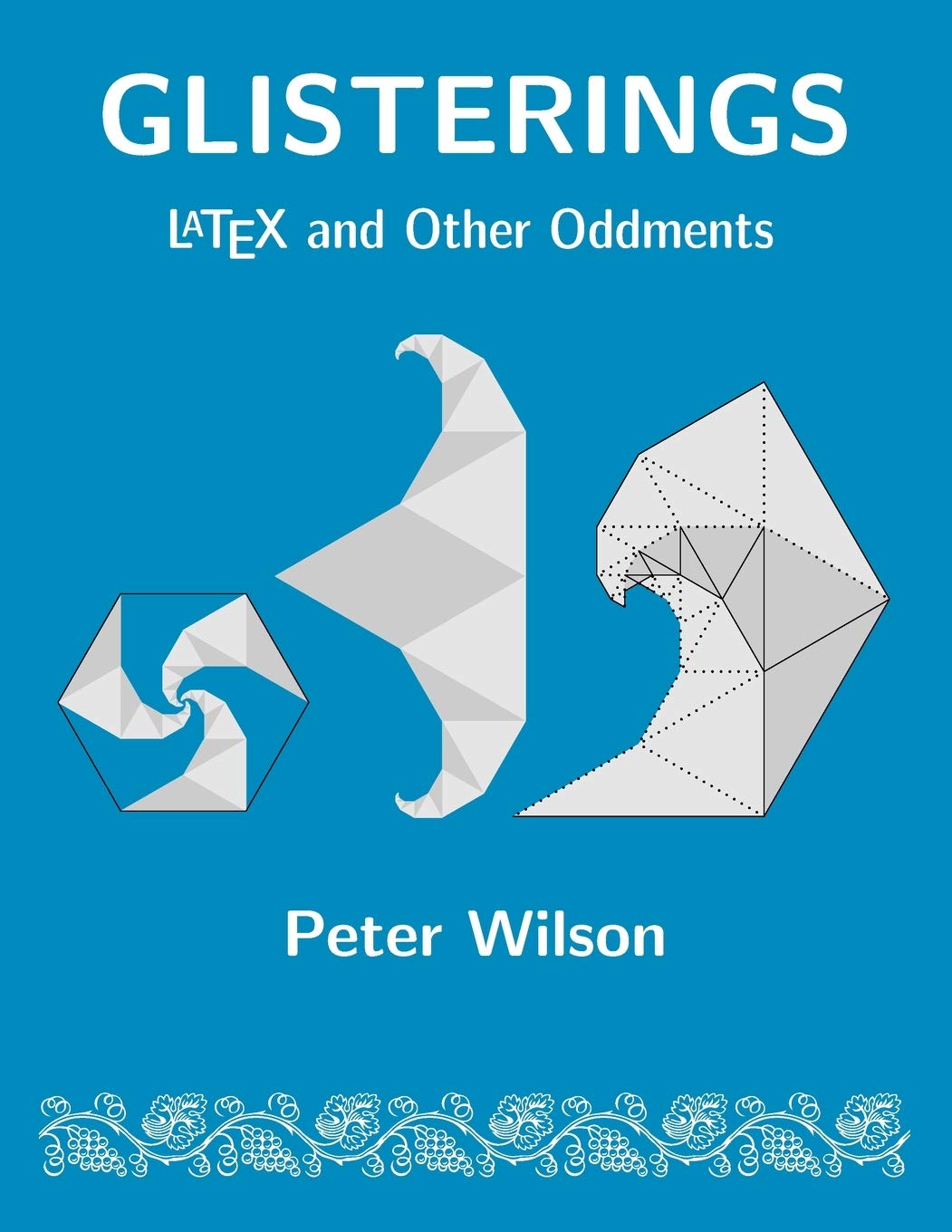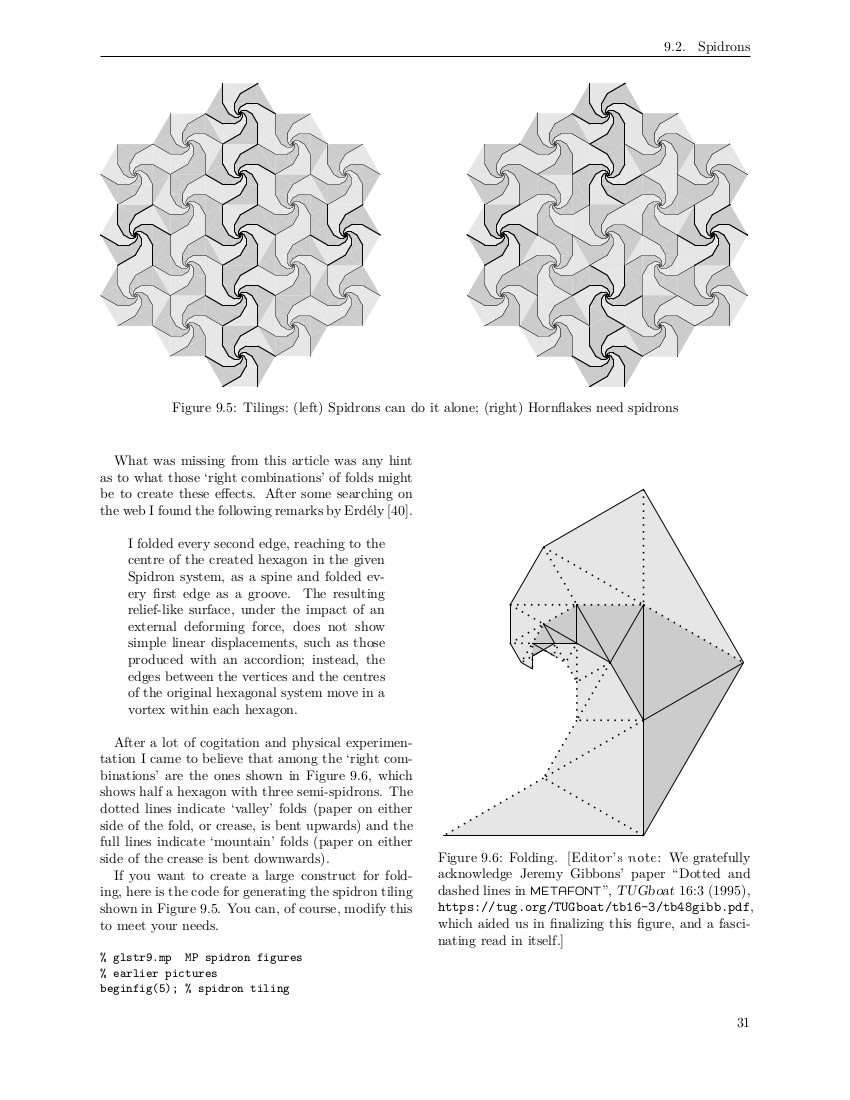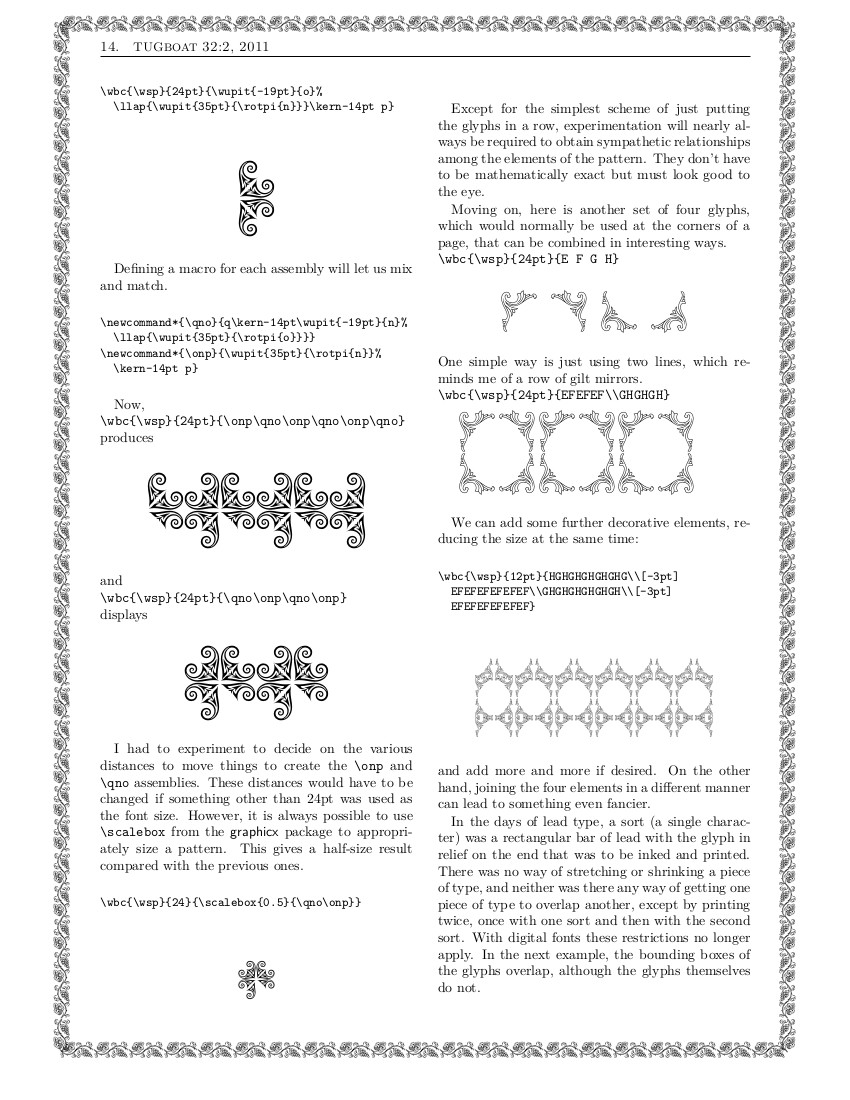
Many many years before people were reading tex.stackexchange.com on their smartphones, the primary forums for asking TeX questions were the list texhax@tug.org (still in lively existence) and the Usenet group comp.text.tex (also still in existence, though not so lively), or ctt as it was known to aficionados. I guess that before texhax and ctt, in the prehistoric times when people exchanged TeX tapes and freshly knapped stone axes, there were TeX-related BBSes, but I do not have reliable information about those. Anyway, many of old timers remember these long Usenet discussions about TeX tricks, where Peter Wilson was prominent with his clever solutions and lucid explanations. Even more people know Peter Wilson for his memoir class—a great example of exquisite typesetting. The manual of the class is a great introduction not only to the class itself, but also to the typesetting of books in general.
Starting in 2001, Peter published a column Glisterings in TUGboat. The articles consisted of fairly short discussions of tricky LaTeX problems and their solutions. Some material of this column was based on the discussions in ctt and texhax. For many years these articles were the favorite part of the journal for me—and, I guess, for numerous other readers.
Now TUG has published these columns in a book, and one can reread them collected together. After doing this myself, I recognized how much my TeX style was shaped over the years by them. It was a joy to recall the times when I discovered these little gems of TeX programming—and to find the things overlooked at the first reading.
The subjects in the articles vary from complex problems like string parsing to the textbook-like explanation of subjects like the ways of defining new macros in TeX and LaTeX. The columns about paragraphs and their shapes are probably among the most useful in the book. The TeX way of dealing with paragraphing is rather complex, and Peter explains it with his characteristic lucidity and clearness. Besides TeX and LaTeX, the book discusses fonts, ornaments and other printer devices, MetaPost (the image on the cover, a spidron, is created with MetaPost; see Figure 1), and many other topics. As another proud owner of Lanston Type Company’s LTC Fleurons Granjon (LTC is now a division of P22 Type Foundry, p22.com), I was especially interested in the chapter about using the Fleurons in LaTeX. It gives very useful advice on getting the glyphs aligned.

Of course TeX has changed over these years. While some problems discussed in the book now have somewhat more straightforward solutions (for example, string manipulations today would be probably based on the xstring package), it is surprising how much of the book is still very relevant today and is required reading for an aspiring TeXnician.
The style of Peter’s writing is fascinating. The author’s subtle British humor makes the reading pleasant and far from the dry stuff filling many technical books. The reader meets this self-deprecating humor on the first page of the Introduction:
For many years Jeremy Gibbons edited a very successful column in the TeX Users Group journals TeX and TUG NEWS and TUGboat called Hey—It works! [52]. I learnt much from this but apparently not enough to decline when asked to take over the column. On the other hand I have learnt to my cost that the quickest way to get a correct answer to a question on the comp.text.tex (ctt) newsgroup is to give an incorrect answer. In order not to sully Jeremy’s reputation my first thought was to change the title to Hey—It might work but after some consideration the new title is as you see it earlier—Glisterings—implying that there might be some dross among the nuggets.
and continues to walk along with it during the journey through the book.
Another part of the book’s charm are the epigraphs throughout. They are funny and wise, providing a surprising counterpoint to the point of the text. For example, the section about changing the layout starts with a note by Samuel Johnson,
Change is not made without inconvenience, even from worse to better.
The section about the “superstitious” version of enumerate designed to eliminate an item no. 13 is accompanied by the apt passage from George Orwell’s 1984:
It was a bright cold day in April, and the clocks were striking thirteen.
The book is lovingly typeset by Peter, reminding us that the author is a TeX wizard and typesetter of a very high caliber. The techniques discussed in the book are illustrated by the book itself; for example, a page of the column about ornaments has a nice frame around it (Figure 2).

When compiling the columns in the book, the author gathered the references from each into a joint bibliography, and added an index—a very useful device for a compendium of disjoint materials like this one. He also rearranged epigraphs and deleted the repeated ones. The resulting book is a welcome addition to a library of a (LA )TeX student or even TeXnician—indeed, even for those of us who have a collection of TUGboat issues for the last twenty years. I wholeheartedly recommend it.
Glisterings is the third book published by TUG, after a volume of interviews (2009) and the 25 anniversary collection of papers (2010). This is a fitting continuation of the series. They are all available from tug.org/books, as well as in the general online stores. I hope that we keep publishing the books under our own imprint—perhaps next time without a 10 year hiatus.